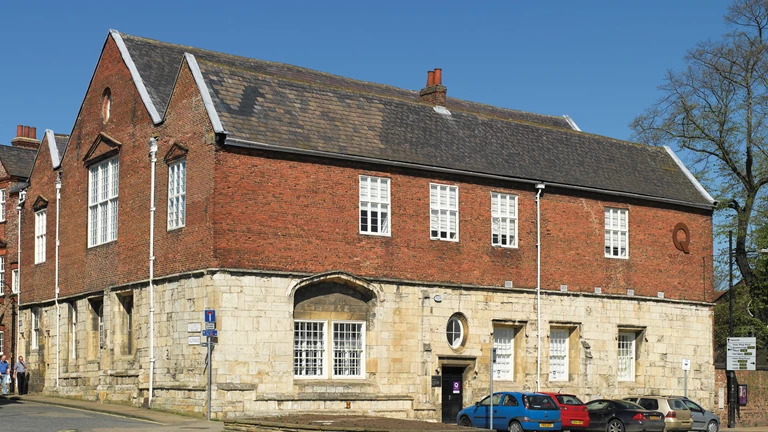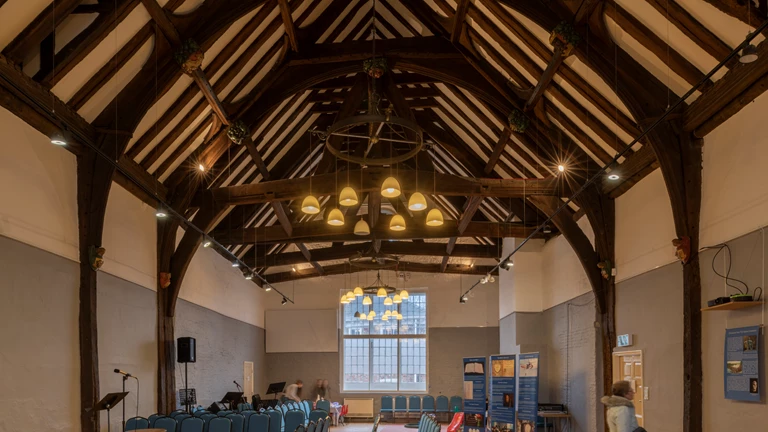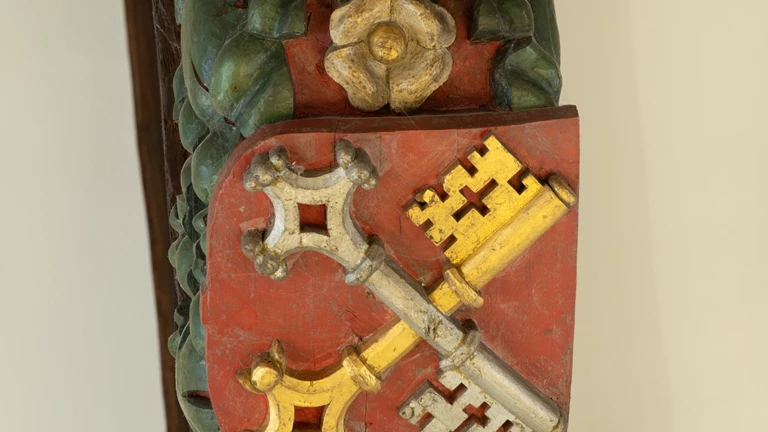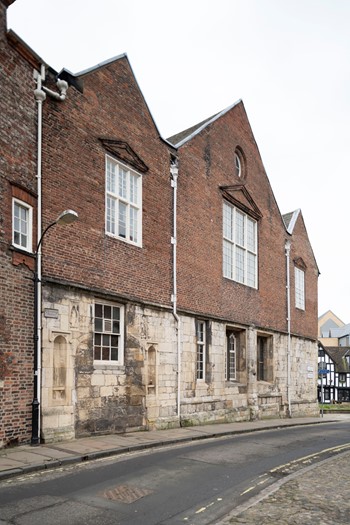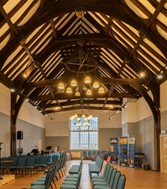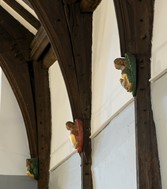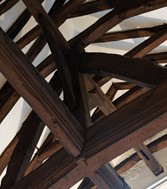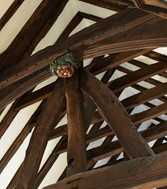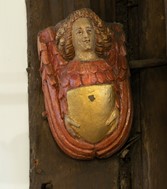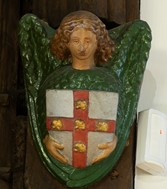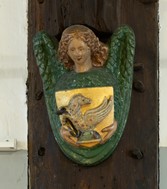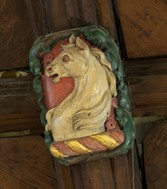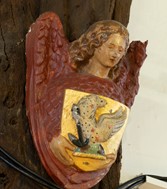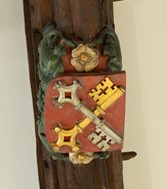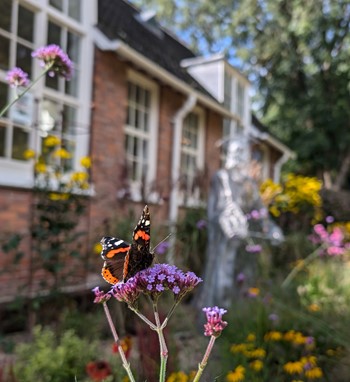St Anthony’s Hall
Cursing friars, wandering pigs, York’s Blue Coat School and a vibrant parish.
In 1400, a group of mendicant, or “begging”, friars were granted an ‘indulgence’ by Pope Martin V and founded a hospital on the Horsefair north of York’s City Walls. Committed to supporting the poor, this ancient order had discovered a treatment for Ergotism - a fearful skin disease known as St Anthony’s Fire. Allowed to raise funds in the City, it’s reported the good brothers were often to be found wandering the streets threatening to curse anyone refusing to donate to their cause. York’s populace also had to sidestep the filth left behind by their freely wandering herd of pigs.
By 1444 the friars needed larger premises and, probably in partnership with the City Corporation, acquired the site of the present St Anthony’s Hall and Gardens on Peasholme Green - the meadow where the peas grow. Construction of the first phase was complete by 1453 and a second six bay extension with adjoining aisles was begun in the 1490s. This extension included a more sophisticated arch-braced roof and an aisled undercroft, which can still be seen today.
You’ll find some interesting carved bosses decorating the intersections of the ribbed ceiling. In the aisles and stairwell, an angel bearing the shield of a donor; a green man; a hart or stag; a fat jolly alderman, a woman with medieval headdress and a couple bound together with a wimple. In the main hall the painted and gilded bosses feature armorial crests and a spirited representation of one of those wandering pigs, worn as a badge by the friars.
By 1554 the hall had come under the complete control of the City Corporation and was being used by many of York’s smaller guilds. In 1623, no less than 53 guilds were contributing to its upkeep. It was also the location for York’s Triennial Feasts that all citizens could attend on payment of a fee. This was widely abused with people hiding away in the smaller rooms days beforehand to avoid payment.
At this time the adjoining field was used for archery practice and cloth-weaving was introduced at one end of the hall, as the Corporation attempted to tackle levels of poverty in the City. By 1627 the St. Anthony’s Guild and Hospital were formally dissolved.
During the English Civil War the building was used as a gaol for Royalist prisoners and then a House of Correction until 1730. The remains of the cell windows can still be seen at ground floor level. In 1705 part of the hall was fitted out for use as the Blue Coat School. A charitable institution for poor boys, it was intended for 40 boys to learn handicrafts, reading, writing and arithmetic. The boys were also expected to undertake a seven year apprenticeship at sea, in husbandry or manufacturing for “the benefit of the public”. Girls had their own similar institution on Monkgate called the Grey Coat School. Remarkably, the Blue Coat school operated on the site until 1946.
Instrumental in establishing the University of York, in 1953 St Anthony’s Hall became home to the Borthwick Institute for Historical Research, now the Borthwick Institute for Archives. In 2004, the Institute moved to a purpose-built building next to the J B Morrell Library on the University’s current campus.
In 2008 the Trust acquired the Hall and extensive restoration work was begun, including underpinning the walls. Officially reopened in 2010 by the then Archbishop of York Dr John Sentamu, the Quilters' Guild moved in. Offering a home to their National Collection, the Guild also opened a museum and put on regular exhibitions and workshops for children and adults. With over 800 items in the Collection, it includes the earliest known dated British patchwork – the 1718 Silk Patchwork Coverlet. Sadly, in 2015 the museum was deemed no longer viable; however, the public are welcomed to exhibitions throughout the year and the Collection may be viewed by appointment. The Guild now share the building with Trinity Church York, whose Presbyterian congregation use the upper floor for regular worship and community events.
Discover more about St Anthony's Hall
St Anthony's Hall
Peaseholme Green
York
YO1 7PW
Historic England Grade l listed building
Award-winning gardens
Behind the high walls of St Anthony's Hall you'll find a delightful city centre garden restored by the Trust in 2009 - 2013. Home to the Thin Ice Press, York Ghost Merchant's Dispensary and Arras Restaurant, find out about this city centre idyll and award-winning garden design.

